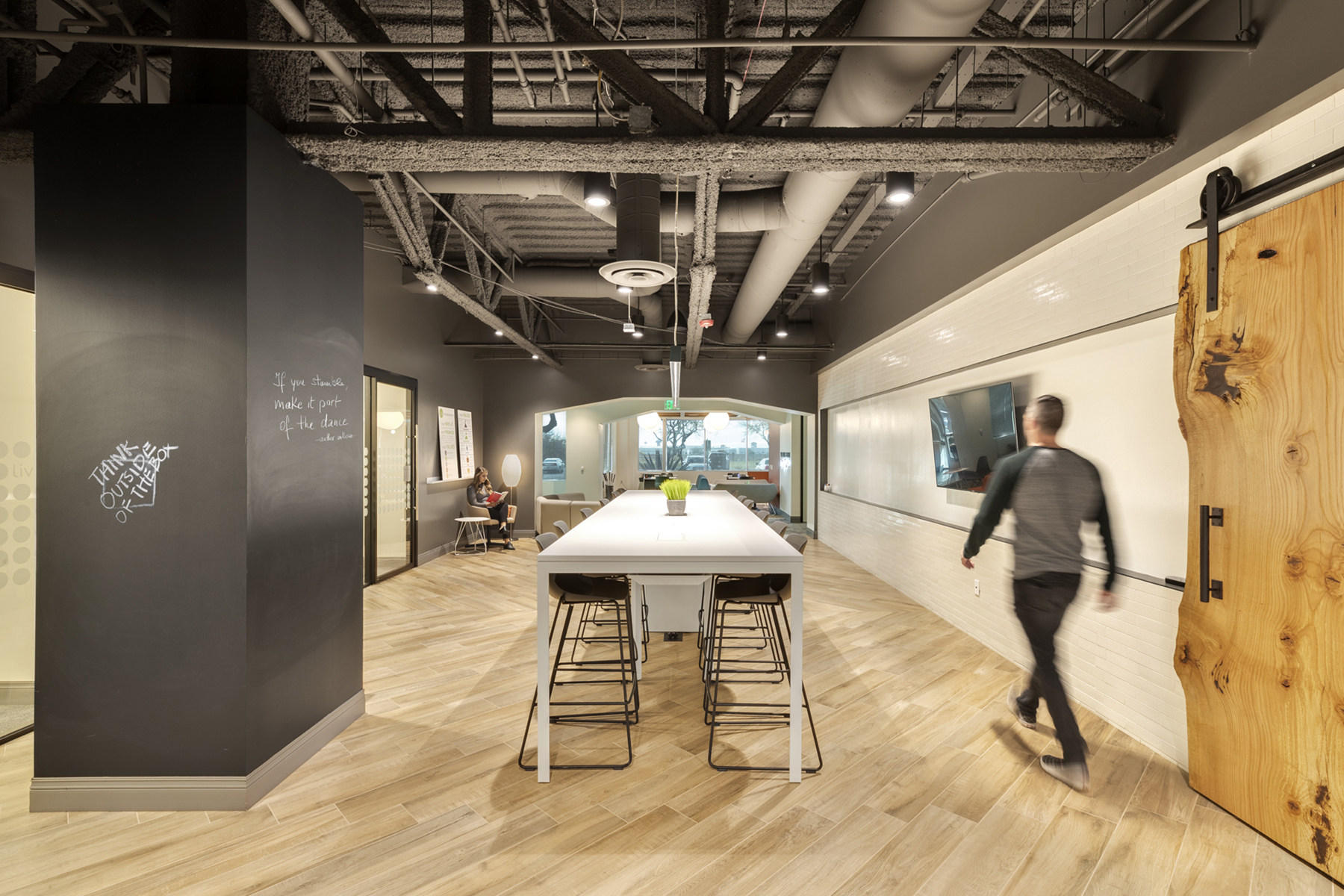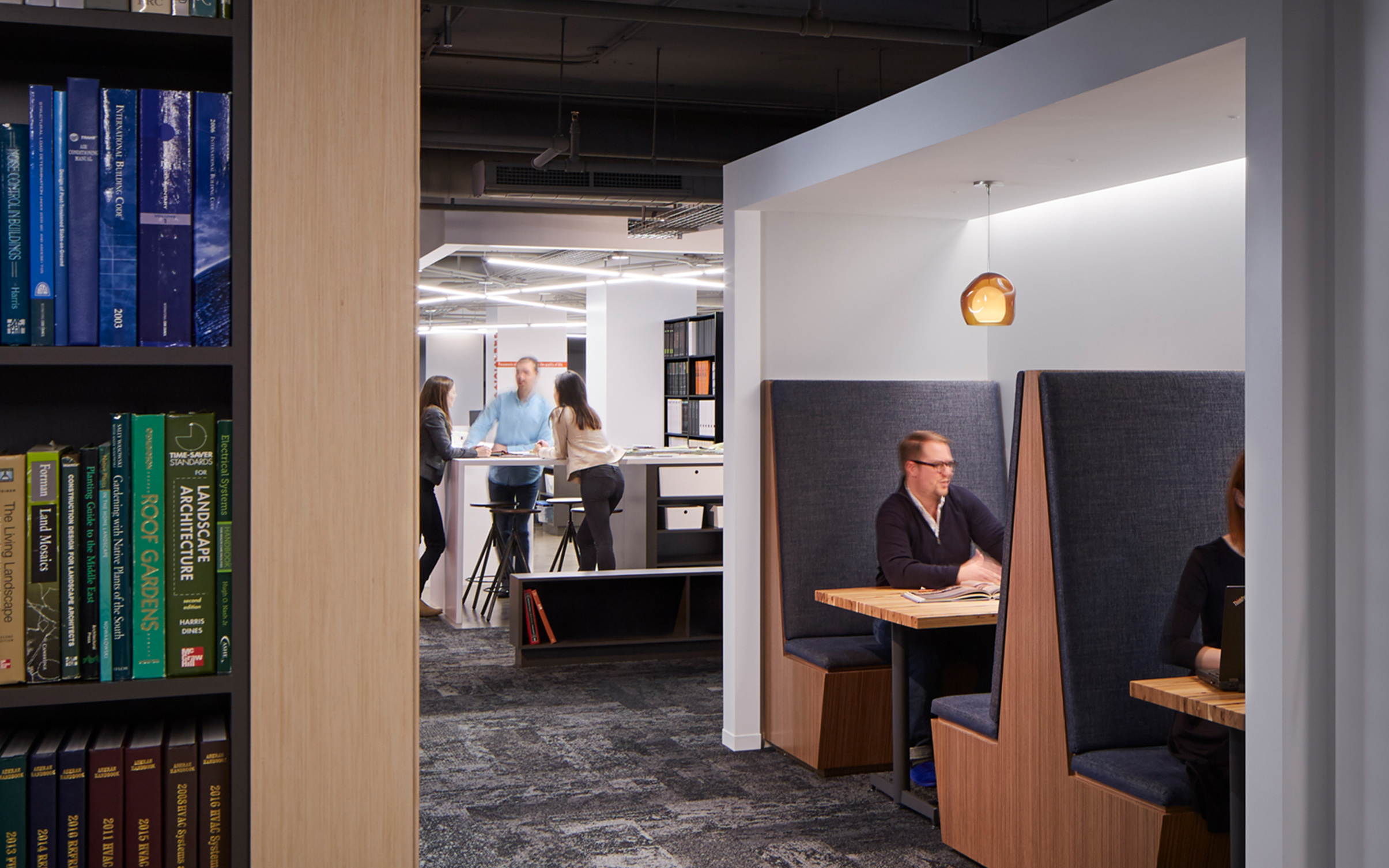Change Management is the Key to Successful Office Design
This article, authored by Deborah Wagner of SmithGroup, was previously published in Work Design Magazine.
Change is the only constant. Confront it. Manage it. Conquer it.
Today, the physical workplace acts as one of an organizations’ greatest tools for implementing business strategy, second only to talent, by supporting a business’s goals, driving the organization forward and creating the culture that defines the organization. A strategic, specific, and evolving change management plan can act as the user manual that aligns these impactful tools, talent and workplace, to create a high-functioning organization.
When an organization embarks on a journey of physical change, they can choose to maximize that opportunity to impact the culture and operations of their organization as well. Strategy and change management together plays an integral role when transforming an organization as a whole. The design process begins with strategy, focusing on understanding the organization’s business drivers and creating the business case for change. This requires implementation through a robust change management process in order for the workplace to realize its full potential. Future thinking business drivers are compared to the current workplace, enlightening the gap between “where are we now?” and “what do we aspire to be?” to define the needs of a change management program. Through the change management process:
- The components of an organization are assessed
- Inhibitors or enablers to change are explored
- Change is managed through communications
- Performance metrics are established to assess, monitor and modify the change management plan as needed.
In October of 2016, our SmithGroup Chicago Office transitioned to an agile, un-assigned work environment in order to support our business drivers: focusing on process to provide the best value for our clients, embracing ambiguity to capitalize on nimbleness and empower employee decision making, and support blurring the boundaries of our growing interdisciplinary, multi-generational and multi-market teams. In an agile workplace, our Chicago employees have the flexibility to select the space and typology that best suits their various individual tasks, teamwork and collaboration throughout the day. As SmithGroup Chicago shifted from traditional assigned workstations to an agile, un-assigned work environment, the change management plan acted as the key to unlocking the success of the design – providing employees insight into the formation of their new workplace strategy, unrolling operational protocol, the Framework, for using the new space and defining cultural values to propel the office to the forefront of collaboration and innovation.
The design and strategy team uncovered enablers (attributes about the change that excite and empower employees) and inhibitors (concerns about the change that need to be addressed prior to move-in). Overall, employees were open-minded and supported the shift to more collaboration and less structure; but inhibitors were identified as there was apprehension about specific operational tasks – where to store stuff, both personal and project related, how to find a colleague in an unassigned workplace, and the perception of loss of “ownership” over the workspace if one did not have an assigned desk.
Ultimately, through various activities – a series of town hall meetings which invited all staff to help craft solutions, change champion workshops to ensure key players were well informed on specifics about the change, engagement activities such as tours of other agile offices, weekly email blasts, and the creation and roll out of the agile office Framework – employees in the Chicago office took ownership of the change and worked through inhibitors and apprehensions to prepare for a successful transition to agile working.
Regarding the most common inhibitor, “stuff,” it was determined each employee would be assigned a locker for their personal affects (i.e. purse, shoes, notebooks, laptop) and project storage (i.e. drawings, finishes, schedules) would be centrally located for all project team members at the team pod. To gain thorough support from employees, a series of change management activities such as a locker mockup, team discussions around where personally-owned reference materials would reside, and pre-move testing of mobile personal storage options, helped to craft a universally-approved solution for “stuff” that yielded a successful outcome on day one in the agile office.
A culmination of the series of activities and discussions, the office Framework acts as an owner’s manual for employees, providing insight into the formulation of the agile office and serves as a working guide to help employees get the most out of their new workplace setting. The Framework includes a description of each work typology (i.e. collaboration workstation pod, phone rooms, the all-staff lunch space, etc.) and the “rules,” or Framework, associated with those spaces. The “Quiet Car,” for example, is an open workstation area where it is culturally understood employees should not be disturbed because the space is a focus, heads down work area. The Framework suggests there is no eating and no talking in this space. There are also more general guidelines and scenarios depicted to describe daily tasks such as finding and choosing a workplace, using instant messaging software to find fellow team members throughout the office and how to pack up at the end of the day.
An important attribute to the success of a change management plan, is its continued evolution, even after an organization has moved into their new physical space. It is important to both celebrate the successes and identify persistent operational or cultural issues and continually augment the Framework. Once SmithGroup moved into our new space, we began measuring and assessing the success of the agile workspace through data collection and analysis (see previous article “Data & Design”).
Analysis revealed each workstation typology zone had members from each discipline sitting in that zone within the course of the week – proving that we were in fact blurring the boundaries of our growing interdisciplinary, multi-generational and multi-market teams. Other analysis showed us however, workstation areas where employees had consistently become lax in their “end of day pack-up” were less utilized than surrounding stations (55% as opposed to the average of 68%) since many employees had mistaken the untidy stations as occupied. This led us to revisit and re-present the Framework, conveying the data-supported benefits of following the Framework on a daily basis.
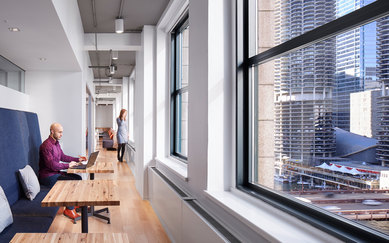
SmithGroup Chicago
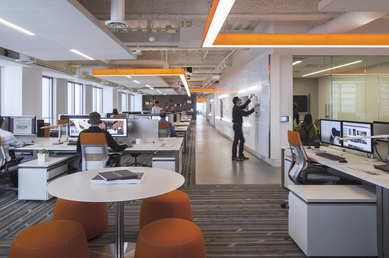
SmithGroup Los Angeles
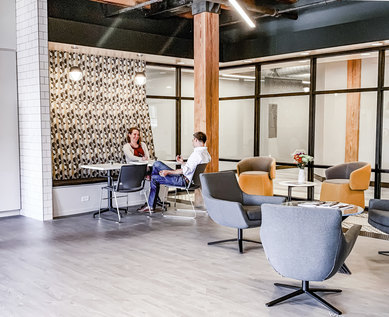
SmithGroup Milwaukee
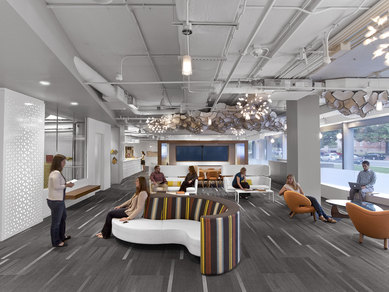
SmithGroup Washington, DC
While business strategy should be consistent across a multi-office organization, the change management plan often is not. Because the plan is affected by the comparison of the strategy to the current condition of the office, which may vary across an organization, the difference between the two offices, and subsequently potential inhibitors or enablers, may be different. In 2017, the SmithGroup Madison office embarked on a similar physical, functional and cultural change in order to support their growing team. The success of the Madison office was predicated on preserving the informal collaborative culture in the agile environment, all while introducing a new discipline, Architecture. Because Madison had witnessed the success of the agile workspace in Chicago, there was less apprehension about personal stuff allocation. The change management plan focused more on providing staff with the comfortability to experiment in less traditional workstation areas such as charrette zones, individual booths with scenic overlooks and a new virtual reality area. The rapid hiring and the seamless cultural integration of a new discipline, twelve architectural employees in two years (with room for more!), shows the true capabilities of an agile environment and change management plan.
The true test of success is when employees tote their excitement for their own workplace. For the past two years, SmithGroup Chicago has won a Chicago Tribune Top Workplaces award, one given to organizations based on all staff surveys that measure whether staff feel their workplace aligns with and supports the organization’s’ goals. In a recent survey of all staff hired since SmithGroup Chicago’s transition to the agile workplace, 70% of new hire respondents shared the agile environment impacted their decision to join SmithGroup. A successful onboarding process integrates the employee into the culture and informs them of the alignment with the overall business strategy. As this is the focus of the change management plan, it acts as an effective onboarding document.
SmithGroup has also begun implementing an agile workplace, and personalized change management plans, in our Detroit, San Francisco, and Los Angeles offices, as well as using our lessons learned on operational and cultural issues to catapult growth of a new Milwaukee office which opened in 2019. Ultimately, goals of the change management plan are to provide consistency of brand and culture in alignment with SmithGroup’s strategic business drivers. Key attributes to a successful, radical change in work environment is a comprehensive change management plan, informed by and comprised of inclusive workshops and communications, and is continually evolved to fit the organization’s needs.
